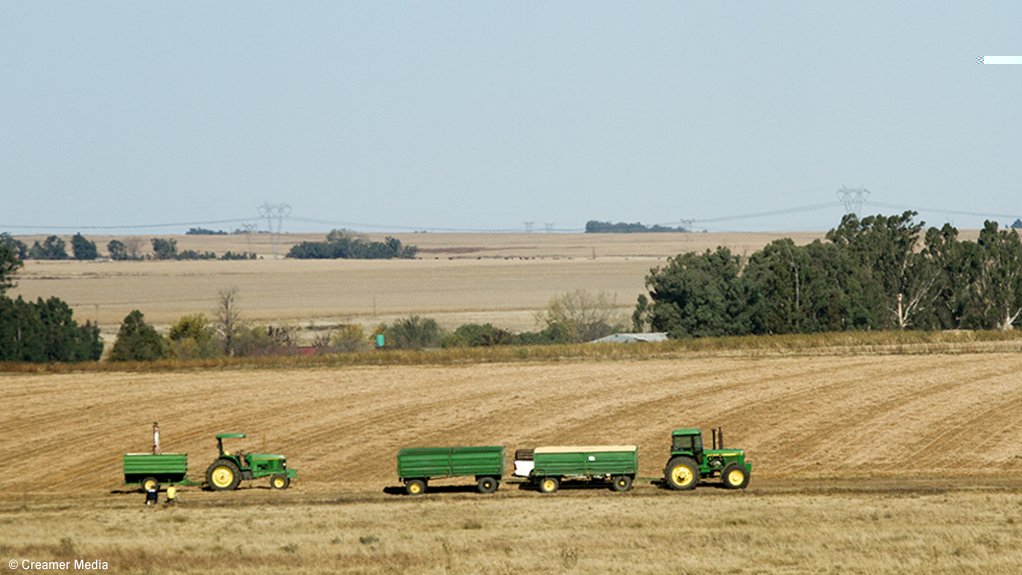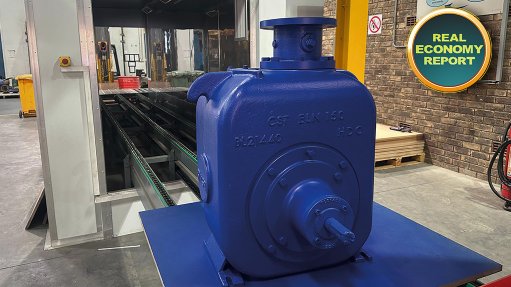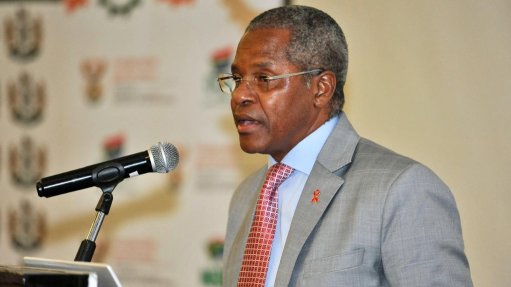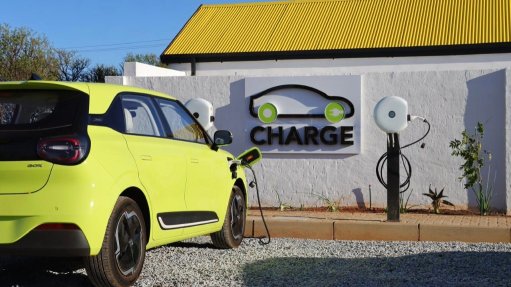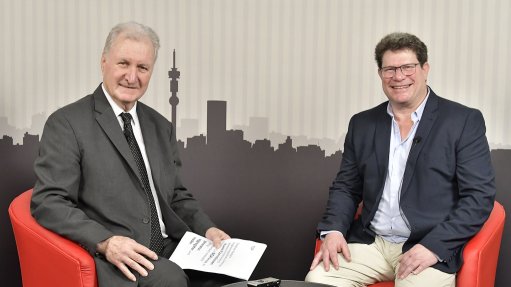South Africa's GDP vulnerable of sliding into negative territory after barely growing in the first quarter
South Africa’s gross domestic product (GDP) increased by 0.1% in the first quarter, following an increase of 0.4% in the fourth quarter of 2024, with the economy not growing sufficiently and these figures can slide into negative territory at any time, said Statistics South Africa Statistician-General Risenga Maluleke on June 3.
Compared with the first quarter of 2024, GDP expanded by 0.8%. South Africa's real economy during the first quarter of this year was R1.7-trillion.
Four industries recorded positive growth between the fourth quarter of 2024 and the first quarter of this year. The agriculture industry was the largest positive contributor, increasing by 15.8% and contributing 0.4 of a percentage point to the positive GDP growth.
The transport industry increased by 2.4%, contributing 0.2 of a percentage point, and the finance industry increased by 0.2%, contributing 0.1 of a percentage point.
Further, the manufacturing industry was the largest negative contributor, decreasing by 2% and contributing a negative 0.2 of a percentage point.
In the primary sector, the agriculture, forestry and fishing industry increased by 15.8% in the first quarter of 2025, contributing 0.4 of a percentage point to GDP growth. This was primarily due to increased economic activities reported in horticulture and animal products.
The mining and quarrying industry decreased by 4.1%, contributing a negative 0.2 of a percentage point. The largest negative contributors were platinum-group metals.
However, in the secondary sector, manufacturing shrank by 2% and contributed a negative 0.2 percentage point to the GDP growth. Seven of the ten manufacturing divisions reported negative growth rates, Maluleke said.
The largest negative contributions were reported for the petroleum, chemical products, rubber and plastic products, food and beverages, and motor vehicles, parts and accessories and other transport equipment divisions.
In the tertiary sector, trade, catering and accommodation grew by 0.5%, and finance, real estate and business services grew by 0.2%, with each industry contributing 0.1 percentage point each to the GDP growth for the quarter.
Meanwhile, the transport, storage and communication industry increased by 2.4%, contributing 0.2 of a percentage point. Increased economic activities were reported for land transport, air transport and transport support services.
In terms of expenditure on GDP, final consumption expenditure by general government decreased by 0.1%, mainly driven by decreases in compensation of employees and purchases of goods and services.
Further, gross fixed capital formation decreased by 1.7%, contributing a negative 0.2 of a percentage point.
“Investments have been under pressure for quite some time and, while the figure was positive in the third quarter of 2024 at 0.2%, otherwise it has been in negative territory for quite some time since the third quarter of 2023, and continuing in the current slump of 1.7%,” Maluleke said.
The negative contributors to the decrease in gross fixed capital formation were residential buildings, down 5.8% and contributing a negative 0.6 of a percentage point; machinery and other equipment down 1.4% and contributing a negative 0.6 of a percentage point; construction works down 2.8% and contributing a negative 0.5 of a percentage point; and transport equipment down 3.1% and contributing a negative 0.3 of a percentage point.
Further, net exports contributed a negatively 0.3 of a percentage point to expenditure on GDP. Exports of goods and services increased by 1%, largely influenced by increased trade in vegetable products, vehicles and transport equipment excluding large aircraft and mineral products.
Imports of goods and services increased by 2%, largely influenced by increased trade in chemical products, mineral products and machinery and electrical equipment.
COMMENTARY
If present trends persist, the growth outlook for this year now seems likely to be only about 1%, possibly rising to about 1.5% in 2026. It is clear that the incipient economic recovery in South Africa is presently struggling to gain momentum and needs maximum support to strengthen the business cycle upturn, said NWU Business School economist Professor Raymond Parsons.
The latest growth figures, therefore, again inject renewed urgency into the need to pivot South Africa’s growth strategy in ways that make better growth prospects possible.
The disappointing GDP growth figure of 0.1% for the first quarter confirmed several months of muted high frequency economic data that pointed to this likely outcome. Although adverse global developments earlier this year have also played a role, the weaker economic data was already apparent before then.
This reality was already recently presaged by several reduced growth forecasts for 2025, including by the National Treasury from 1.9% down to 1.4% and the South African Reserve Bank from 1.7% to 1.2%.
Gross fixed capital formation was also negative. The poor performance of fixed capital investment as a key driver of growth raises a notable red flag, as capital investment is the kingpin of the growth rate, said Parsons.
This poor performance also emphasises the importance of speeding up the large-scale infrastructural spending to which official policy is already committed. Accelerated structural reforms remain the best pathway to the Government of National Unity’s overall 3% growth target in the medium term, as well as coping with external headwinds, he added.
Meanwhile, the GDP figures show that economic momentum remains elusive, financial services firm Nedbank said.
In terms of the direction, GDP grew by a meagre 0.1% quarter-on-quarter in the first quarter, slightly better than its and the market's forecasts of no growth. Compared with the same quarter a year ago, the economy grew by 0.5%, slower than in the fourth quarter of 2024.
“We did not expect fireworks, but today's numbers are disappointing. Stats SA also lowered the 2024 estimate slightly. Despite the lower base and patchy picture of the first quarter, we still expect the economy to gain some upward traction in the quarters ahead.
“The boost will continue coming from consumer demand, which should accelerate as inflation remains subdued and interest rates decline further, bolstering real incomes and lowering borrowing costs.”
However, the upside will be capped by slower government spending owing to fiscal constraints, patchy fixed investment, and a weaker net trade position caused by fading global growth, subdued commodity prices, and persistent policy uncertainties.
Further, while consumers benefit from firmer income growth, muted inflation, and lower interest rates, confidence remains frail, and credit demand is weak, probably owing to mediocre labour market conditions and lingering financial strain among lower- to middle-income groups. Consequently, Nedbank has forecast GDP growth of around 0.3% quarter-on-quarter for the second quarter of the year.
Growth will accelerate in the year's second half. While global conditions will remain a drag, consumer and business confidence should improve as structural reforms continue, financial conditions ease, and consumer demand gains pace.
Agriculture should also benefit from favourable, or La Niña, weather conditions throughout the year, said Nedbank.
Meanwhile, the recovery in consumer spending will likely gather momentum on the back of still-subdued inflation and lower interest rates, which will reduce debt service costs and bolster real disposable incomes.
Additionally, increased spending would gradually erode spare capacity in various industries. However, increased capacity utilisation and continued structural reforms will lift business confidence, leading to a modest recovery in private-sector capital outlays later this year.
If the government delivered on its plans to accelerate infrastructure spending, increased fixed investment by government and public corporations could provide an added boost, the bank added.
“Altogether, we forecast GDP growth of 1% in 2025, only moderately faster than 0.5% in 2024. Growth should improve to an average of 1.5% in the next three years, underpinned by easing structural constraints and higher consumer spending,” said the Nedbank Group Economic Unit.
Article Enquiry
Email Article
Save Article
Feedback
To advertise email advertising@creamermedia.co.za or click here
Comments
Announcements
What's On
Subscribe to improve your user experience...
Option 1 (equivalent of R125 a month):
Receive a weekly copy of Creamer Media's Engineering News & Mining Weekly magazine
(print copy for those in South Africa and e-magazine for those outside of South Africa)
Receive daily email newsletters
Access to full search results
Access archive of magazine back copies
Access to Projects in Progress
Access to ONE Research Report of your choice in PDF format
Option 2 (equivalent of R375 a month):
All benefits from Option 1
PLUS
Access to Creamer Media's Research Channel Africa for ALL Research Reports, in PDF format, on various industrial and mining sectors
including Electricity; Water; Energy Transition; Hydrogen; Roads, Rail and Ports; Coal; Gold; Platinum; Battery Metals; etc.
Already a subscriber?
Forgotten your password?
Receive weekly copy of Creamer Media's Engineering News & Mining Weekly magazine (print copy for those in South Africa and e-magazine for those outside of South Africa)
➕
Recieve daily email newsletters
➕
Access to full search results
➕
Access archive of magazine back copies
➕
Access to Projects in Progress
➕
Access to ONE Research Report of your choice in PDF format
RESEARCH CHANNEL AFRICA
R4500 (equivalent of R375 a month)
SUBSCRIBEAll benefits from Option 1
➕
Access to Creamer Media's Research Channel Africa for ALL Research Reports on various industrial and mining sectors, in PDF format, including on:
Electricity
➕
Water
➕
Energy Transition
➕
Hydrogen
➕
Roads, Rail and Ports
➕
Coal
➕
Gold
➕
Platinum
➕
Battery Metals
➕
etc.
Receive all benefits from Option 1 or Option 2 delivered to numerous people at your company
➕
Multiple User names and Passwords for simultaneous log-ins
➕
Intranet integration access to all in your organisation



